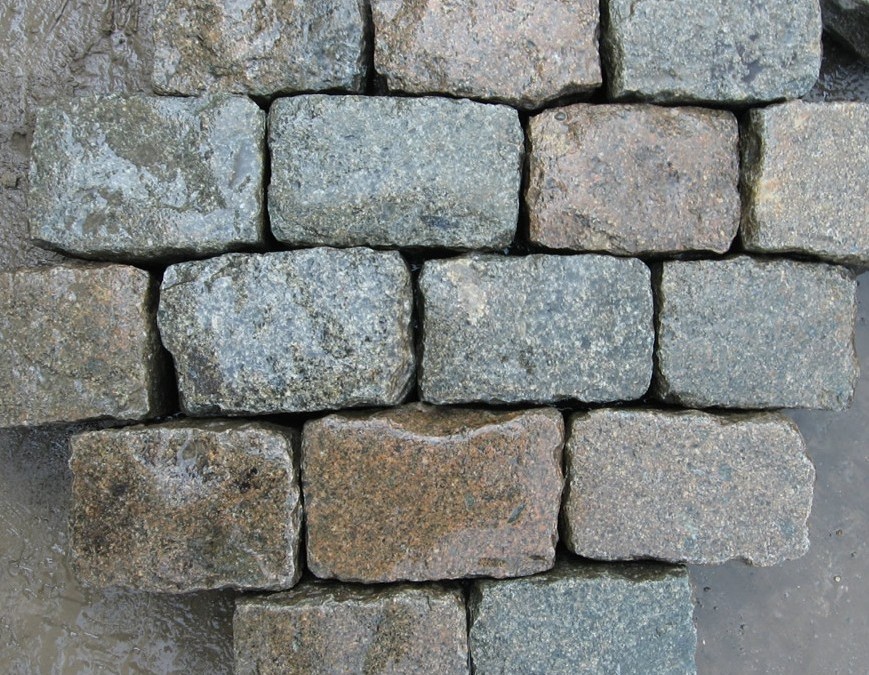What exactly is, Belgian Block and how is it different from a cobblestone, sett or a cube? Today all four of these terms are used interchangeably to some degree. However, they are very different in their historic origin.
Belgian Block is a generic term used to describe HUGE blocks of stone, having little or no affiliation with Belgium itself. Back when European ships set sail from ports such as Antwerp, in search of goods to trade, large blocks of stone were used as ballast for ships that were too light. When a ships belly would be filled with goods purchased, the blocks of stone would be left behind. Some U.S. port cities have happily benefited, paving the roads of towns in Boston, New York, Charleston and others. These simple blocks are mostly dark gray and are really big – 9″ to 12″ long x 7″ – 10″ wide x varying heights. Today, new or old very large granite rectangle stones used for paving, might be referred to as Belgian Block.
The word cobblestone historically comes from the blending of two words, cob and stone. The word cob in Old English meant a “rounded lump”. “Cobble” appeared in the 15th century adding the suffix “le” to “cob”, furthering the description of small stones rounded by the flow of water. It was these smooth rounded “cobbles” gathered from stream beds, that paved the first “cobblestone” streets as far back as the Roman times. They were however very uncomfortable to travel over, and soon lost their appeal, giving way to hand-cut or ‘dressed’, relatively flat paving stones called setts or cubes.
Which brings us to setts and cubes – originally British terms, referring to stones that were cut into either rectangles (sett) or squares (cubes), used for centuries throughout streets in Britain and the rest of Europe.
With time, the true meaning of these terms gave way to what we here in the U.S. generically refer to, as cobblestone which is the accepted term given to paving stones whose length and/or width should not usually be greater than twice the thickness.
If you would like to have authentic Historic European Cobblestone and curb imported from Europe on your project, you’re in the right place. Visit our gallery pages to view the many options we proudly import nationwide!


Recent Comments